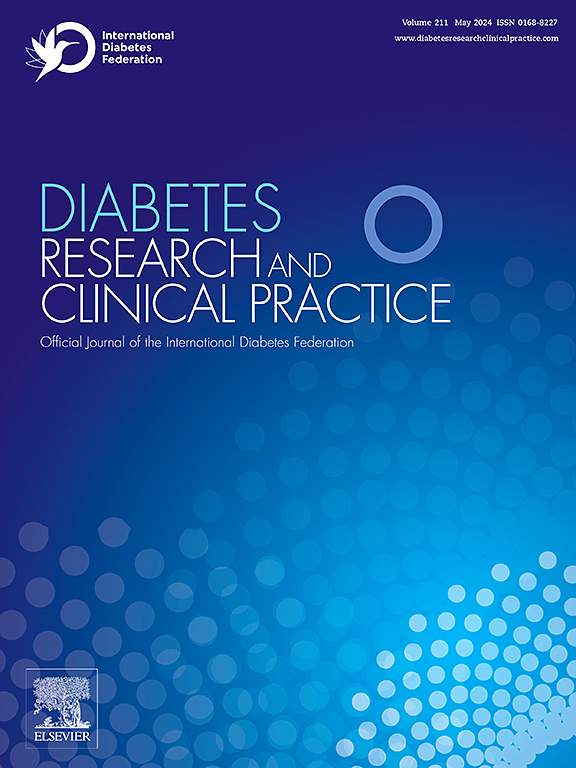Osteocalcin is inversely associated with worse adipose tissue distribution and cardiovascular risk in autoimmune diabetes
IF 6.1
3区 医学
Q1 ENDOCRINOLOGY & METABOLISM
引用次数: 0
Abstract
Background
Osteocalcin (OCN), whose release is impaired in diabetes, is suggested to regulate the adipose tissue (AT), being potentially associated with Cardiovascular risk (CVR). We aimed at evaluating whether OCN serum levels are associated with AT health and CVR in a primary CV prevention population with AD.
Methods
Body mass composition was assessed in sixty-two people with AD.Serum levels of OCN, adipokines and markers of endothelial dysfunction were measured. Regression models were used to test the association of OCN with markers of AT, endothelial dysfunction and CVR categories as determined by the Steno Type 1 Risk Engine (ST1RE) score.
Results
OCN was inversely associated with upper body fat deposition index (UBDFI) (Adj β coefficient −0.484, p value = 0.001). People in medium/high CV risk categories had higher UBFDI and lower OCN, while biomarkers of endothelial dysfunction were not different across CVR classes. A logistic binary regression for ST1RE score showed significant association of OCN with medium/high CVR category: OR [95 % CI for 1 SD increase: 0.541 [0.264––1.108], p = 0.093].
Conclusion
OCN is inversely associated with unhealthy AT, supporting the protective role of OCN in AT. Moreover, lower OCN levels are associated with increased CVR in AD population.

骨钙素与自身免疫性糖尿病患者较差的脂肪组织分布和心血管风险成反比
本文章由计算机程序翻译,如有差异,请以英文原文为准。
求助全文
约1分钟内获得全文
求助全文
来源期刊

Diabetes research and clinical practice
医学-内分泌学与代谢
CiteScore
10.30
自引率
3.90%
发文量
862
审稿时长
32 days
期刊介绍:
Diabetes Research and Clinical Practice is an international journal for health-care providers and clinically oriented researchers that publishes high-quality original research articles and expert reviews in diabetes and related areas. The role of the journal is to provide a venue for dissemination of knowledge and discussion of topics related to diabetes clinical research and patient care. Topics of focus include translational science, genetics, immunology, nutrition, psychosocial research, epidemiology, prevention, socio-economic research, complications, new treatments, technologies and therapy.
 求助内容:
求助内容: 应助结果提醒方式:
应助结果提醒方式:


